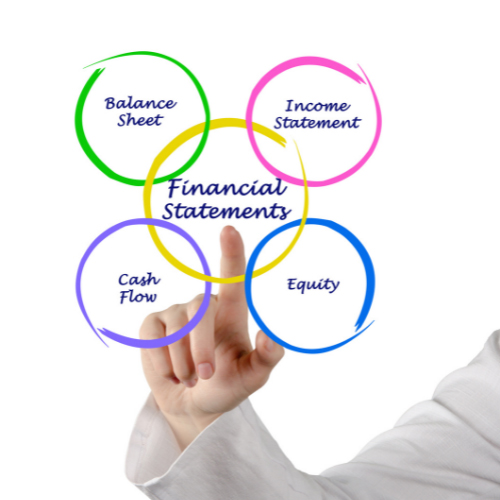Navigating the world of small business finances can be daunting. While you don’t need to be an expert in every area—like the complex tax code or cloud technology—having a solid grasp of your financial statements is crucial. This blog will break down the key components of your small business financial statements, what they mean, and what to focus on.
Key Financial Statements You Need to Know
1. Balance Sheet
What is it?
The balance sheet, or statement of financial position, provides a snapshot of your business’s assets, liabilities, and equity.
Importance:
This statement reflects your business’s worth, which is vital for lenders assessing loan risks and for investors gauging value.
Formula:
Assets = Liabilities + Equity
2. Income Statement
What is it?
Also known as the profit and loss statement, the income statement details your revenue against expenses over a specific period.
Importance:
This statement helps you evaluate your profitability and assess whether your strategies are effective in increasing revenues or reducing costs.
Formula:
Revenues – Expenses = Profit (Net Income)
3. Cash Flow Statement
What is it?
Think of the cash flow statement as a river—it tracks the flow of money in and out of your business.
Importance:
It reveals your liquidity, helping you determine your ability to meet financial obligations and budget for future needs.
Formula:
Cash Flow = Cash from operating activities ± Cash from investing activities ± Cash from financing activities + Beginning cash balance.
Cash vs. Accrual Accounting
Understanding your accounting method is vital, especially for tax purposes.
- Cash Accounting: Transactions are recorded only when cash changes hands.
- Accrual Accounting: Revenue and expenses are recorded when they are earned or incurred, regardless of cash flow.
Example:
If you sell $3,000 worth of lawn mowers, under cash accounting, that sale is recorded when payment is received. Under accrual accounting, it’s recorded at the time of the sale.
Best Practices for Managing Your Financial Statements
- Uniform Expense Categorization: Ensure that expenses are consistently categorized. Avoid switching categories mid-year to maintain clarity.
- Focus on Cash Flow: Regularly monitor where your money is coming from and going to.
- Project and Plan: Use insights from your balance sheet and income statement to plan for future projects, expansions, or hiring.
- Analyze Trends: Look for patterns in your financial data. For example, identifying your busiest months can help with staffing and inventory management.
Conclusion
By understanding your financial statements, you can spot potential issues early, better manage cash flow, and make informed decisions about investments or borrowing needs. Take the time to familiarize yourself with these essential tools; they are key to your small business’s success.
For additional resources on how to understand your small business’s financial reports, what to look for and how to spot trends, please contact us at the Small Business Development Center – SBDC – serving Collin and Rockwall Counties, Texas.
Blog post by: Alex Plotkin


